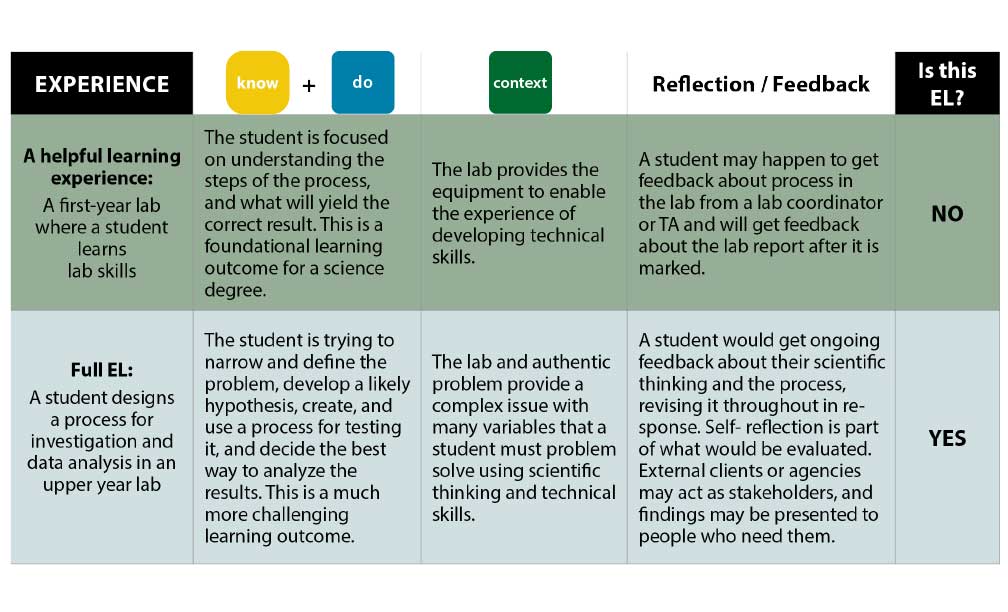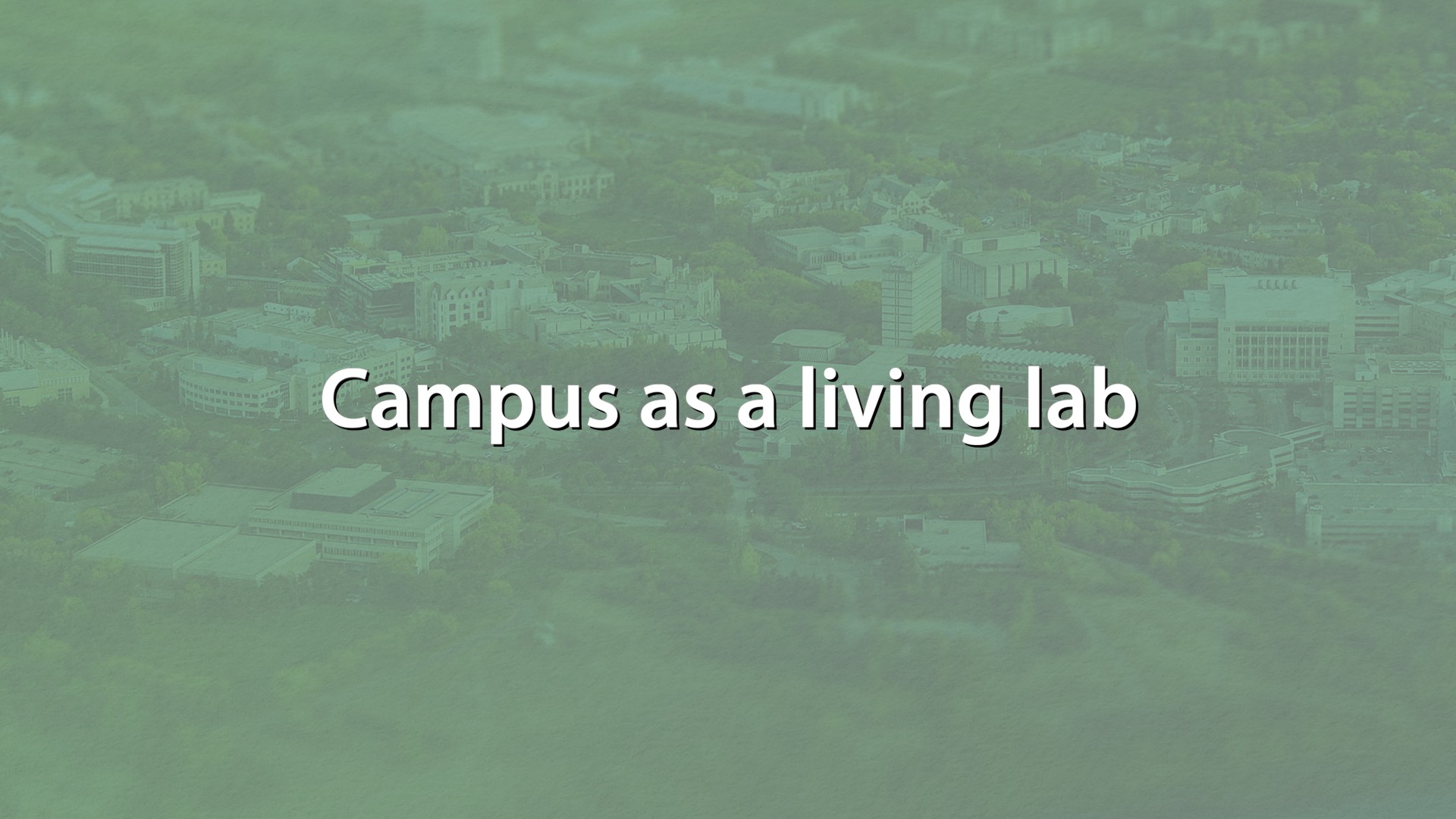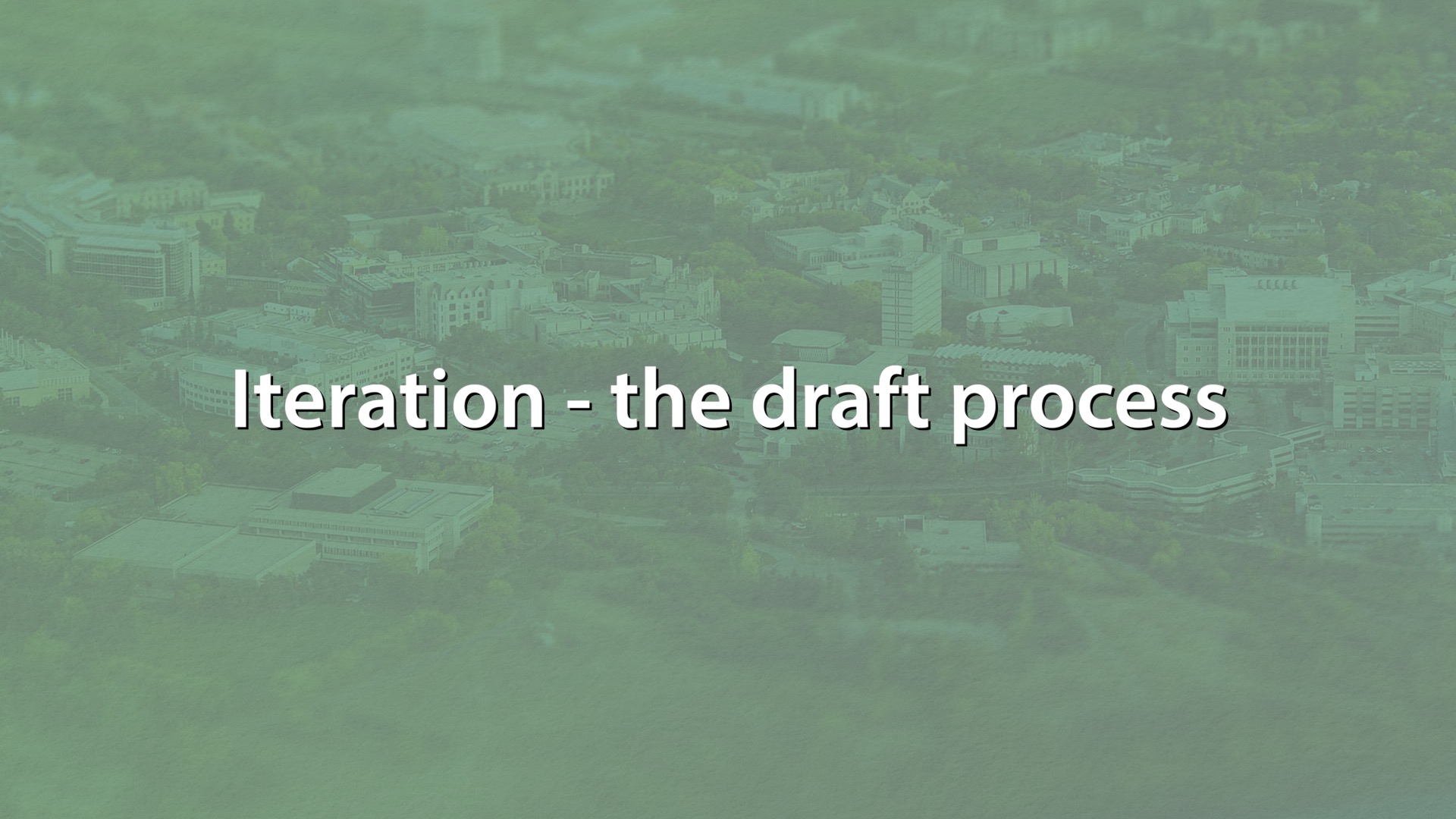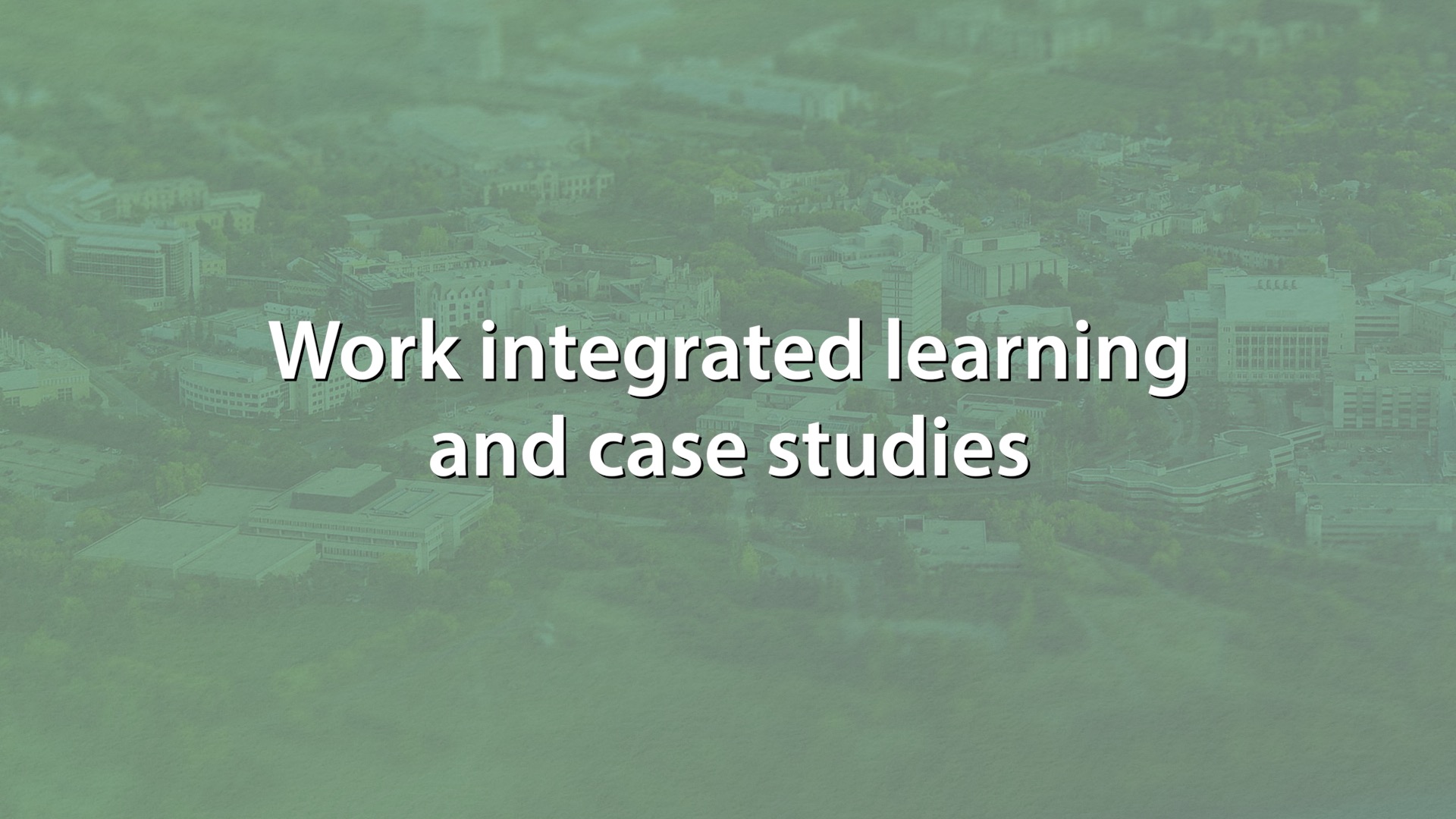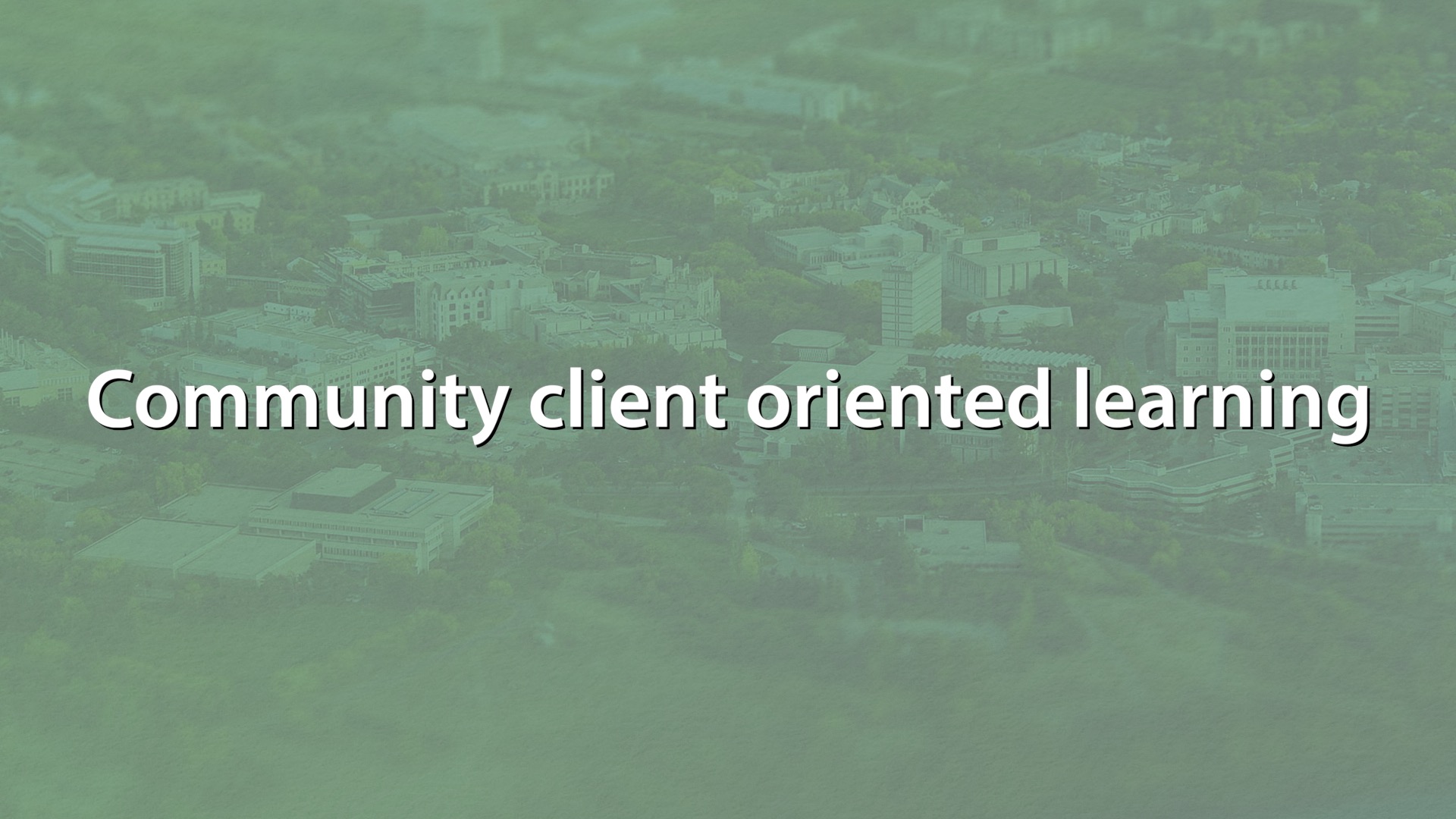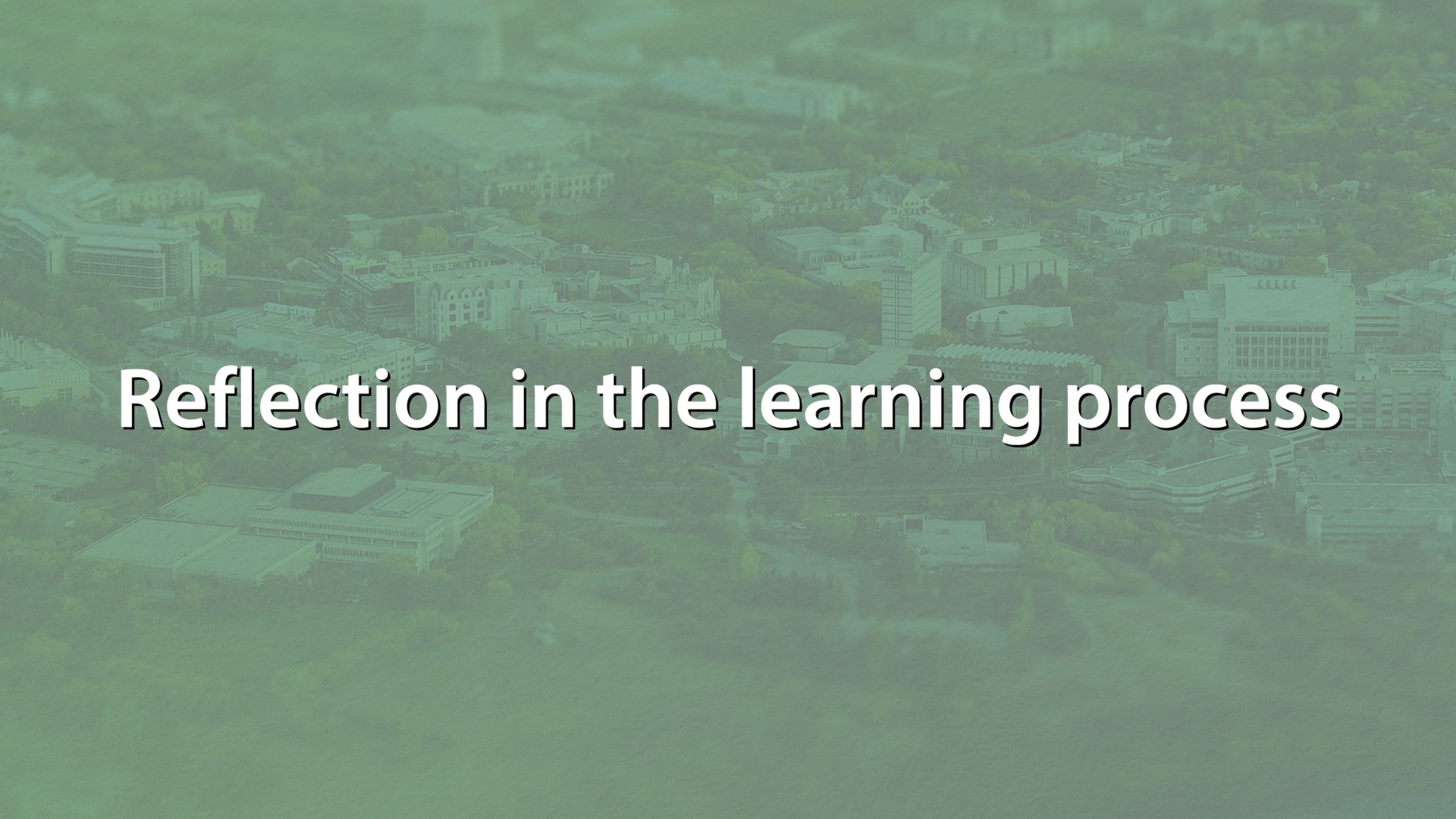Experiential Learning (EL) is a spectrum of activities where students practice, receive feedback, and can reflect on a learning task that mirrors what they will do with their learning after graduation. Sometimes the "real world" context of an EL task is simulated and other times it is created through partnership with community organizations and employers. While this page is directed towards instructors planning EL activities for their students, if you are looking for a chance to work with a USask class on EL an intake form for interested community partners can be found here.
In EL, knowledge on its own is not enough. Students must demonstrate that they are able to apply knowledge skillfully. In order to build towards skillful competence, EL learning activities must include the four elements below.
Four Essential Elements of Experiential Learning
-
Doing: Students apply their knowledge by doing (active learning) in a situation with some unpredictable factors that require student decision-making.
-
Context: The application occurs in an authentic context, where students need to make decisions about what is important and the best path forward. This may include an authentic problem, a real client whom students will help, or an audience beyond the class.
-
Feedback: Students get information about how well they are learning as the learning occurs, and adjust their thinking, actions etc. in response as they learn.
-
Reflection: Students consider the success of their approaches, generalizing what worked and considering how to improve as they learn.
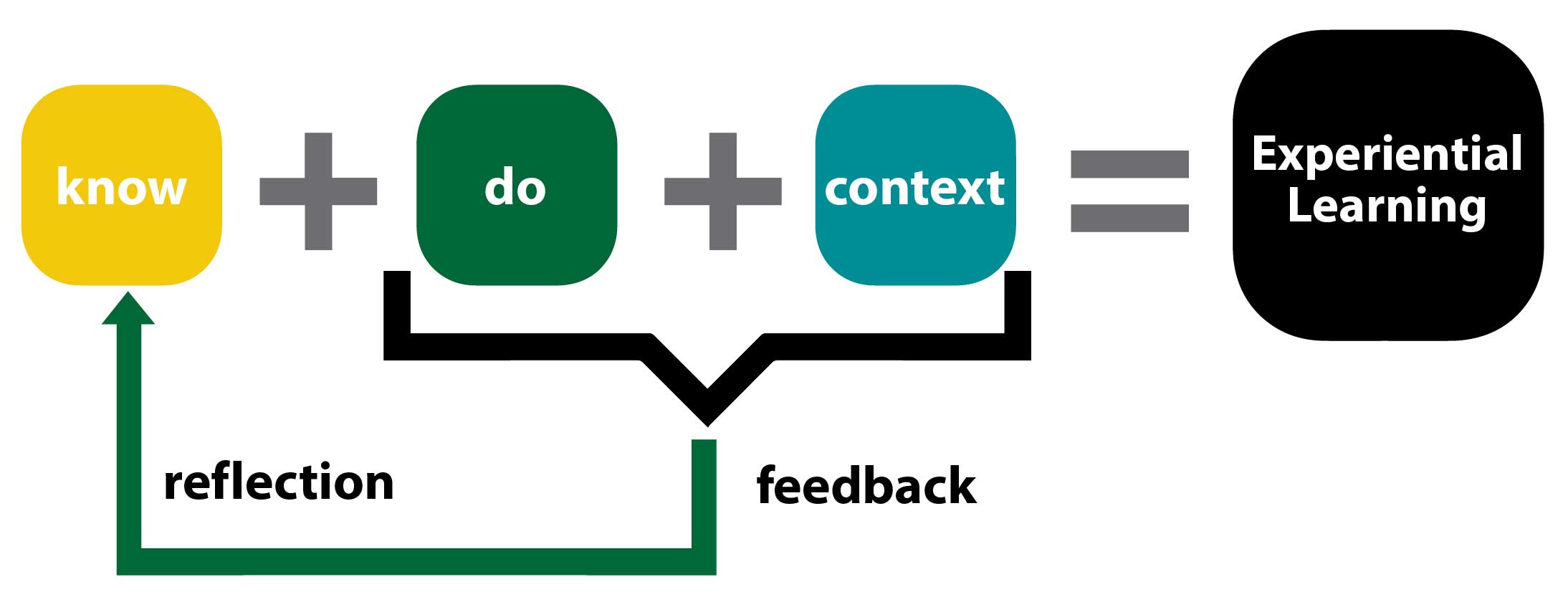
How do you know when you need Experiential Learning?
EL is not a new approach to teaching, but in recent years has become increasingly common in higher education. It is an engaging approach to teaching and learning that can be extremely beneficial for students, especially as they start their careers. Due to practical limitations, EL can't always be used, which leads to the question: When should you use EL?
Some skills taught in university courses are critical for students to perform successfully in their careers after graduation. These skills should be taught using EL. To identify these skills, you should review your program level outcomes, connect with recent graduates, talk to your disciplinary community, and/or reflect on the core skills of your discipline.
Many processes require practice, feedback, and iteration to learn. If these processes are important for students to master, then you should use EL. Within EL, students perform activities, receive feedback, and complete facilitated reflection. The reflection stage moves them through a process of considering what they did, how it went, and what they’ll do differently next time. As a result, they are prepared to do better the next time they practice the process. The best EL implementations provide multiple opportunities for students to practice until they reach mastery.
Students often identify a gap between what they learn in the classroom (i.e., what they know) and what they are expected to do (i.e. to demonstrate their learning). They may feel like they understand what they’ve been learning and may even do well on an exam, but when they go to apply the learning in an authentic context, they struggle. If you’ve noticed this happening, you have a great opportunity to integrate EL into your course. EL provides students with the opportunity to practice and apply their learning in authentic contexts and navigate authentic variables they will likely encounter. The authentic context could be a complex work placement, but it doesn’t need to be. There are more accessible ways to provide an authentic context to all students, such as role plays, simulations, case studies, laboratories, or *short-term projects with external partners.
Types of EL
Experiential Learning occurs in the intersection between the disciplinary domain and the context of the experience.
-
Domain refers to the types of disciplinary praxis (thinking and practice combined) that underly disciplinary competency.
-
Context, the place where the EL occurs, shapes the types of experiences and their relative complexity.
Examples connected to Indigenization, internationalization, and sustainability are indicated in bold with an astericks*, recognizing that all experiential learning helps work towards better ways of knowing, doing, and being for people, planet, and prosperity.
|
|
Work or entrepreneurship |
Research |
Problem or project |
Community-engaged or service |
Creative |
|
In class |
|||||
|
In |
Skills lab |
Creating a prototype or solution |
Create an artefact (sculpture, improv) Language lab* |
||
|
In workplace, community |
Design challenge with industrial commercial institutional partners |
Gallery, exhibit, performance |
* Indicates the example is connected to Indigenization, internationalization, and/or sustainability.
EL in your course
Examples of EL in the curriculum:
Click the thumbnails below to view experiences of select USask educators who embed experiential learning in their courses.
|
Campus as a living lab |
Iteration and the draft process |
Setting up group work |
|
Work integrated learning |
Community client-orientated learning |
Reflection in the learning process |
Learn more about how to teach with EL:
Funding
The Teaching and Learning Innovation Fund is a strategic fund intended to provide academic units with support for program level curriculum, assessment or instructional change initiatives and projects including experiential learning.
Get Help
- Designing EL in your course, contact Gwenna Moss Centre for Teaching and Learning
- Connecting with industry and community partners, contact Career Services
- Accessing career readiness and skill development modules/resources, contact Career Services
Still not sure where to start? Email us the details of your project or questions to be connected with the appropriate supports.
Experiential Learning blog
Loading...


